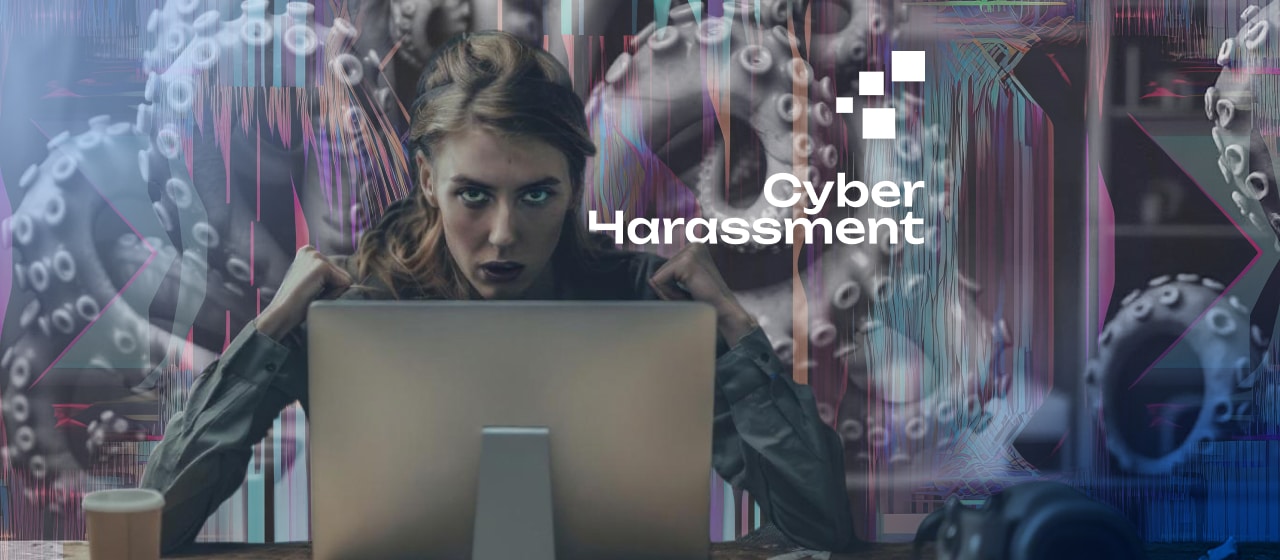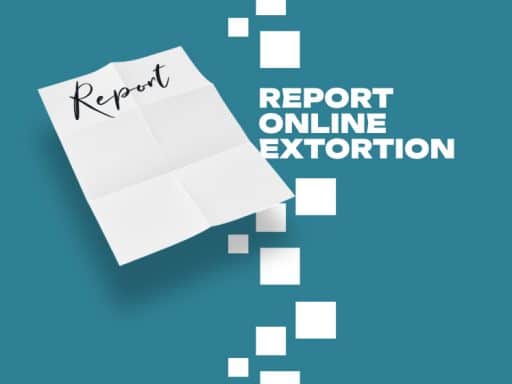Cyber harassment takes many forms — including cyber stalking, bullying, doxxing, and defamation. In many cases, the crime will occur anonymously with the culprits hiding behind fake online profiles. Not only does this make it difficult to hold the perpetrator accountable, but it also can increase and prolong the psychological toll of the harassment. By working with cybersecurity experts like those at Digital Forensic Corp., you can fight back against these criminals and strike them where it matters by removing their anonymity. Continue reading to learn how you can protect yourself and take control in the face of cyber harassment.
What Is Considered Cyber Harassment?
Cyber harassment is the intentional use of communication technology to emotionally harm a victim. It is a broad term that can describe many different online actions. However, we mainly see five forms of cyber harassment.
Threatening Messages
While a single threatening message could be considered cyber harassment, it usually takes a series of messages to become a serious issue. There are many cases of online harassment beginning with a death threat or intimidating message promising emotional or physical harm.
Cyber Bullying
Cyber bullying is the use of communications technology to humiliate, harass, or intimidate another person. The crime is closely related to cyber harassment, but they are typically emphasized more in different contexts. Cyber bullying is often used in relation to minors, whereas cyber harassment is typically used in relation to adults.
Doxxing
Doxxing is the nonconsensual publishing of someone else’s private, identifiable information on the internet. This can include an address, phone number, email, employer location, and more. Many states do not have laws against doxxing specifically, but they may prosecute the act under other statutes like harassment.
Trolling
As social media grew, so did the number of trolls. Now, trolls are everywhere, and their goal is to always cause an uproar. Trolling is a specific form of harassment in which bad actors make a post or comment to provoke an emotional reaction. It can range from harmless acts of fun to malicious attacks against other people. There is a lot of debate in the U.S. about how much trolling should be protected under the First Amendment. In the UK, however, certain trolls can be imprisoned depending on the case. For example, one internet troll was jailed for eighteen weeks in the UK for posting offensive messages about teenagers that had passed.
Revenge Porn
Revenge porn is a serious form of harassment that can cause extreme emotional distress and real-life consequences. The term largely refers to people who publicly share the explicit images of their former partners. Revenge porn typically occurs after a breakup and with the intent to intimidate, embarrass, or harm their former partner. It’s also known as nonconsensual intimate image abuse in many legal contexts, but that term refers to the general sharing of explicit images without consent.
What Can the Police Do About Cyber Harassment?
While the state laws on harassment vary, the crime is still illegal across the country. It’s best to report cyber harassment to your local law enforcement to hold the offender accountable. Although this is a great first step, there are still multiple complications.
- First, the harasser must be identifiable. With criminals using sophisticated methods to stay anonymous, you may need assistance tracking down the perpetrators responsible. Fortunately, DFC has a team of digital forensic experts that can follow the digital trail left by cybercriminals — uncovering their geolocation and identity.
- They must fall within the jurisdiction of local police. With the internet giving criminals the ability to reach victims from anywhere, there are many cases of harassers living in other states or even countries.
- Not all police departments take cases of online harassment as seriously as other crimes. Depending on your case and evidence, the local authorities may not prioritize your needs.
Can You File a Cyber Harassment Complaint with Law Enforcement?
Despite the complications, notifying law enforcement is always recommended for victims of cyber harassment. They can provide guidance on the best next steps to take and record the incident officially, which may be useful if you decide to take future legal action. Before notifying the police, make sure you follow these recommended steps:
Collect Evidence
Gather all the information you have. Take screenshots of the conversations, profiles, and preserve any images sent by the offender. Make sure you capture the evidence before deleting or blocking profiles or conversations.
Notify Online Platforms
Many online platforms allow users to notify the system administrators about cyber harassment incidents. Social media platforms will often flag the suspicious user and quickly remove their account from the platform.
Go to Local Law Enforcement
This is where your evidence becomes crucial. You need it to support your claims and establish a timeline of events. The police will use your evidence to assess the severity of the situation. You can also notify the FBI using their Internet Crime Complaint Center (IC3), the national portal for tracking cybercrimes.
How Can You Protect Yourself from Cyber Harassment?
Almost anyone can be a victim of cyber harassment, even users who barely have an online presence. It’s important for all internet users to understand the best practices regarding online safety to minimize their chances of falling victim to cyber harassment and other crimes. Here are a few tips about online harassment and what to do to prevent it.
- Change privacy settings. Online platforms allow users to switch their profile to private. Users can also prevent strangers from messaging them.
- Be cautious about social media posts. Images can reveal a lot about you. They can reveal where you are, who you’re friends with, or what’s important to you. Criminals can use this information against you to access accounts or catfish you.
- Avoid talking to strangers. Many harassers begin as online strangers. They typically come into contact with the victim and will continue to interact with their online profiles. The harassers may even use fake or anonymous accounts to contact the victim directly.
- Remove personal details online. The less that criminals know about you, the better. Make sure to keep things like birthdays, location, and more off your profile bio.
- Ask for assistance. Law enforcement, legal professionals, and private cybersecurity firms can provide assistance in cases of cyber harassment.
A Cyber Harassment Case: Twitter Abuse
Caroline Criado-Perez is a feminist who campaigned for women to be featured on UK banknotes. When it was announced that Jane Eyre would be featured on the ten euros banknote, she began to receive threatening tweets. She was sent fifty abusive tweets an hour for half a day before she went to the police. The threats ranged from intimidating messages like “I will find you,” to more sinister messages.
Criado-Perez notified the police and, eventually, two of the harassers were charged with “improper use of a communications network”. In 2014, the two criminals were sentenced to eight to twelve weeks in prison.
Is Cyberstalking Considered Harassment?
Yes, cyberstalking is classified as a form of harassment. Cyberstalking is legally defined as the use of communication technology to harass, intimidate, or annoy a user, causing fear or distress. Both terms involve a nonconsensual action that significantly impacts the emotional state of the victim. However, cyberstalking refers to repetitive actions, while cyber harassment can refer to a single instance. A pattern of unwanted messages is a common example of cyberstalking.
What if Your Abuser Is Harassing You Anonymously?
As long as they can stay anonymous, abusers can easily harass anyone without fear of repercussions. Tools like VPNs, disposable emails, and fake profiles are widely used by cybercriminals. However, there are ways to unmask the identity and geolocation of the perpetrator.
Private cybersecurity firms house the latest technology and can follow the data trail left by cybercriminals. Some local police departments have cybercrime units to assist victims as well. By employing innovative digital forensic tools, these experts can track the source of malicious conduct and protect the online presence of their clients.
How Digital Forensics Corp. Fights Cyber Harassment
At DFC, we employ innovative digital forensic tools to locate the origins of cyber threats. Our mission is to assist victims of cybercrimes, protect their privacy, and strengthen their cybersecurity. We have a team of experts that are available 24/7 to fight against cyber harassers, stalkers or any cybercriminal attacking you. Contact us today through our website chat or call us at 888.203.0221.






